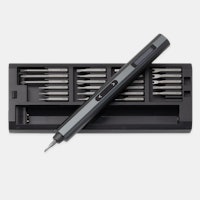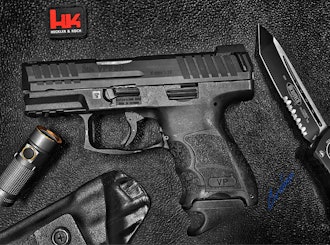Click to view our Accessibility Statement or contact us with accessibility-related questions









search
close
Sort by: Newest
keyboard_arrow_downCbslc
69
Nov 8, 2018
Any recommendations for the DWR on a tent. My REI quarter dome fly is sticky and flaking off.

misspmacy
46
Nov 8, 2018
CbslcHey! There are a few option. I usually re-treat my older tents on an annual basis. I have found that the cheaper stuff works really well: I am a fan of this spray: https://www.walmart.com/ip/WATER-REPELENT-HUNTING-OUTDOOR/112961105?athcpid=112961105&athpgid=athenaItemPage&athcgid=null&athznid=PWVUB&athieid=v0&athstid=CS020&athguid=e382c790-f99-166f44c9c570dd&athena=true
and this one: https://www.walmart.com/ip/Camp-Dry-Heavy-Duty-Water-Repellant-10-5-Oz/140567508?wmlspartner=wlpa&selectedSellerId=0&wl13=2550&adid=22222222227055177294&wmlspartner=wmtlabs&wl0=&wl1=s&wl2=c&wl3=156485554278&wl4=pla-270640867132&wl5=9061079&wl6=&wl7=&wl8=&wl9=pla&wl10=8175035&wl11=local&wl12=140567508&wl13=2550&veh=sem&gclid=Cj0KCQiA2o_fBRC8ARIsAIOyQ-mv7T1ICwY-rqEJVeiPDoECa4Ag-APZ8Fj0Hi0rMGHud6jrlwzywwQaAjtwEALw_wcB

Fuzzymuzzle
171
Oct 29, 2018
If you're in the Seattle area Rainy Pass on Stone Way does excellent repairs to most outdoor gear and apparel.

misspmacy
46
Nov 8, 2018
SejaThat is a great method as well! The only problem I run into with that is that the adhesion to the fabric wears out and chips off quicker than Aquaseal or similar outdoor sealing glues. A great solution as a quick fix though!

Dr.Destructo
40
Sep 28, 2018
Sometimes the DWR just needs to redistributed, which should be the first step., heat it up by going over it with a hairdryer.
PRODUCTS YOU MAY LIKE
Trending Posts in More Community Picks

Graham88
Completely surprised by the lack of blade diversity here on Drop...
I’ve been a collector of Blades since before my teens, and a retailer coming up on 15… or maybe 20 years. Drop has really been kind of an interesting experience for me, because I do occasionally get to see some unusual tech and sometimes EDC items that otherwise I might not have been aware of. And maybe it’s because I have a deep love of cutlery and bladed weapons, but I find myself trolling through the site looking at it what’s available; and it’s just it’s pretty much the same. And the bladed community here is just always confused me.. every single knife is about the same, they’re almost all drop points and although the handle materials change and brands change.. it’s really just the same knife over and over and over again... occasionally you’ll see a tanto or a slight variant; but rarely… and almost never a serrated blade. And I’m just deeply amazed at this diversion of serrated blades. And I’m just surprised there isn’t more of a request for diversity here.... and I...
Mar 12, 2020
JellyDPhoto
Can we get Sony E-Mount or other mirrorless camera options please..
Would be nice to see some Sony E mount full frame cameras on here. I currently shoot with a A99 and they killed the lense path for better or more option lenses and now is all E-Mount. 🤔
Jan 13, 2020
RayF
There Are Pandas, and Then There Are Pandas.
And this isn't either of them! The Pandas we're talking about here, are watches, not bears. And what got me thinking about them (again) was a link posted this morning by @cm.rook who pointed a few of us to the very attractive (and not terribly priced) Yema "Rallygraph" Panda which, in it's most traditional arrangement, looks like the one on the left, but can also be had in the version on the right: The model on the left is a true Panda, while the model on the right is called a reverse Panda. The reason for that distinction is clear--Panda bears, only come in the first arrangement. Now at this point, everyone should be thinking about the most well-know Panda, The Rolex Panda, which is actually a Daytona, and among Rolex Daytonas, the most famous of which is the Paul Newman Daytona, which was famous first, because it was Paul's, and second because it sold at auction for $17.8 million (US Dollars). The story of that auction is well-known so I'll only...
Nov 8, 2019








The DWR finish on technical gear can diminish in performance for a number of reasons; including heavy use, years of use, body oil, dirt, and by the number of times you have washed the gear. The good news is that sometimes the repellent can be revived by using a technical gear wash in a washing machine, such as Nikwax Tech Wash and following the wash with a few minutes in a clothes dryer on a low or medium heat setting. If your gear falls into the category of heavy use, and/or if you tried to rejuvenate the gear by using a tech wash and drying (as above described), and the gear is still not water repellent, you may need to re-apply a DWR via a spray-on or wash-in method. You may also find that as you examine the wear on your gear that you may have to do some other forms of repair, including sealing the seams and fixing any tears or wear spots in the material.
How to Tell if Your Gear Needs Maintenance First, test your rainwear by spraying some drops on the exterior. If the water beads up and rolls off, your DWR is in good shape. If you find that the water sits on the fabric and that the sprayed section of fabric begins to darken, it means that water is making its way to the fibers and wetting the fabric, and it is time to apply a new DWR.
Second, take some time to thoroughly examine the seams of the rainwear, and determine if the seams still intact and if there is fraying of any sort near the seams. Do the same spray test on the seams and if the water seeps through the seams and if the fabric darkens, the seams may need some extra attention. Use this time to additionally inspect the lining of your jacket. If the lining is peeling or delaminating, then your jacket is probably not worth saving.
Third, determine if there are any rips, obvious wear spots or holes in your rain wear (both interior and exterior). These types of damage may also render your gear retired (depending on extent and size of the damage), but for the most part, can be repaired with a little bit of effort.
MAKING THE REPAIRS
Re-Waterproofing (adding a new DWR Finish):
1. Wash your jacket with a technical gear wash. I recommend Nikwax’s Tech Wash, though there are a few others out there that will also do the trick.
2. Wash your jacket using TX Direct Wash-In. This will revitalize the waterproofing in your jacket’s membrane and add fresh DWR. If you prefer you can also use TX Direct Spray-On instead of, or in addition to, a wash-in option: To use the spray, simply apply the spray evenly to the fabric surface and remove any excess with a damp cloth.
3. Dry the jacket. To dry your jacket, tumble dry it on low heat for no more than ten minutes. This will help to shake off most of the water and start the drying process. Take your jacket out of the dryer and hang dry overnight.
What you might need:
1. Once the tears have been found, clean up and cut any loose fibers at the tear with scissors. For a larger tear, try to use a needle and thread to first close the hole. If you are really bad at sewing, find someone who knows how to do it to show you or, can do it for you- if you do a poor job at this step, it can actually cause more damage to your gear.
2. If your jacket has a pinhole or tear, use Gear Aid’s Gore-Tex fabric patches to patch the hole. Cut the patch in either a circular or oval shape to reduce the chances of peeling. For a stronger bond, use an iron on its lowest possible setting for a few seconds on the patch to bond it to the jacket. (A note of caution: be extremely careful using an iron. If the iron is too hot, it will melt your jacket.)
For abrasions, use Gear Aid’s Tenacious Tape to cover the damaged areas and cut the patches in circles or ovals to reduce the risk of peeling. The steps for repair vary if you have a roll or pre-cut patches (see below). For the roll: Roll out a piece that will cover the tear with about an inch of space on all sides. Cut the tape from the rest of the roll and trim the corners and round out into either a circle or an oval. For the patches: Pull the patch out of its container and measure to make sure it will overlap the tear by about an inch on all sides.
3. Apply the Tenacious Tape: peel the backing from the Tenacious Tape and carefully apply it to the outer fabric of your jacket. As you press down, start in the center and work your way out - this will help to avoid air bubbles. I like to use the end of my knuckle to get extra pressure, and rub in a circular pattern. Allow the patch to set for 24 hours before using.
4. Repeat steps 2 and 3 on the inside of the jacket. While not completely necessary for small tears, adding a patch on the inside of the jacket can help to seal out water completely and will make for a longer lasting repair. For a larger tear, this step is a must. Once the inner patch is applied, allow it to set for 24 hours before using.
5. Aquaseal: If you find that the edges of the patch are peeling, or you are generally dissatisfied with the patch’s adhesion to the fabric, you can add aquaseal to the edges with a brush to ensure a watertight, flexible mounting of the patch to the gear fabric. Aquaseal is not a breathable adhesive, so keep that in mind when applying to the fabric, and use sparingly as needed. You may also use aquaseal for tears, small holes and seam damage, but again- it is not a breathable glue, so use sparingly.
What You Might Need:
Here are the steps to using Gear Aid Seam Sealant:
1. Clean and dry all surfaces.
2. Remove old seam sealer ( with stiff bristle brush (i.e a toothbrush) and isopropyl alcohol.
3 Shake well before use.
4. Remove inner foil and pull brush top open.
5. Squeeze bottle gently and apply a thin, even film to stitching on coated side of fabric (or inside of item).
6. Use brush to work into needle holes, sewn joints, corners and under lap-felled and folded seams.
7. Clean drips and excess with damp cloth.
8. Allow to fully dry before use or folding – minimum two hours at room temperature or longer if colder. Test for dryness before use.
What You Might Need:
I wish you the best of luck on your gear repair, and hope that you find these tips and tricks to be useful. If you learn anything yourself as you repair and re-waterproof, or already know something that was not mentioned in this "how-to" I'd love to hear about it!